Hey guys!! Happy Friday! Things are cruising around here!! The windows for the bedrooms were cut yesterday and the framing and electrical are 95% done! The HVAC system is in and I am just SO happy!!!
Ok so, we all are fully aware that the world we live in celebrates and expects perfection. Right?
Everything has to be new and shiny and completely resistant to any sort of character making defects. My biggest fear with the Merc (besides the one where the walls disintegrate) is that we might over renovate it.
I feel like we’ve all seen the adorable historic houses on the MLS. The outside has so much character but the interior has been flipped or over renovated to the point that its basically a new house. Beige walls, faux travertine, and all. The history and past life of it has been forgotten. It makes me so sad! So with the Merc I’m taking extra care to not erase the history of it.
Does it have wonky windows? Hell yes it does. Am I changing them? Never.
It doesn’t bother me that the floors are uneven or that our entryways are wicked thick, or that the walls are a little cockeyed. I LOVE IT!! It’s what makes the Merc special and historic!!
This embracing imperfection is the driving force behind all of the finishes and a lot of the design work that we’re doing.
Lets take flooring for example. There is flooring has all of the “character” painted, pressed, and molded into it. Its supposed to look perfectly lived in and old, but remain completely unchanged for a lifetime. Now don’t get me wrong, I understand the need, and there is a HUGE market for it. But for me, I’d rather have wood floors that show wear and tear because that means that they are full of stories and memories and LIFE!
(source Design Sponge) <– Click that link to see more original floors!
So instead of buying floors like a normal person, we’re making our own.
Remember my favorite front door? We had a replication (well, 3 replications cause we have 3 doors) bid out and it came back a lot higher than I was hoping for ($9k) so instead of stressing and trying to make it work some how and going over budget, I found some really cool vintage doors at Euro Treasures antiques and we’re having them fit for the exteriors. Total cost? $150/door (it will end up being more because we have to fix them up, get rid of the grill, and have the jamb made) but WAYYYY less than $9k thats for sure.
I think the biggest mistake with the Merc would be trying to make everything look old from the word go, instead of just giving it the opportunity to let it happen over time. So that leads me to the question of the day: Do you have original wood floors with gaps and cracks? How do you feel about them? How do you keep them clean? I need all the info.
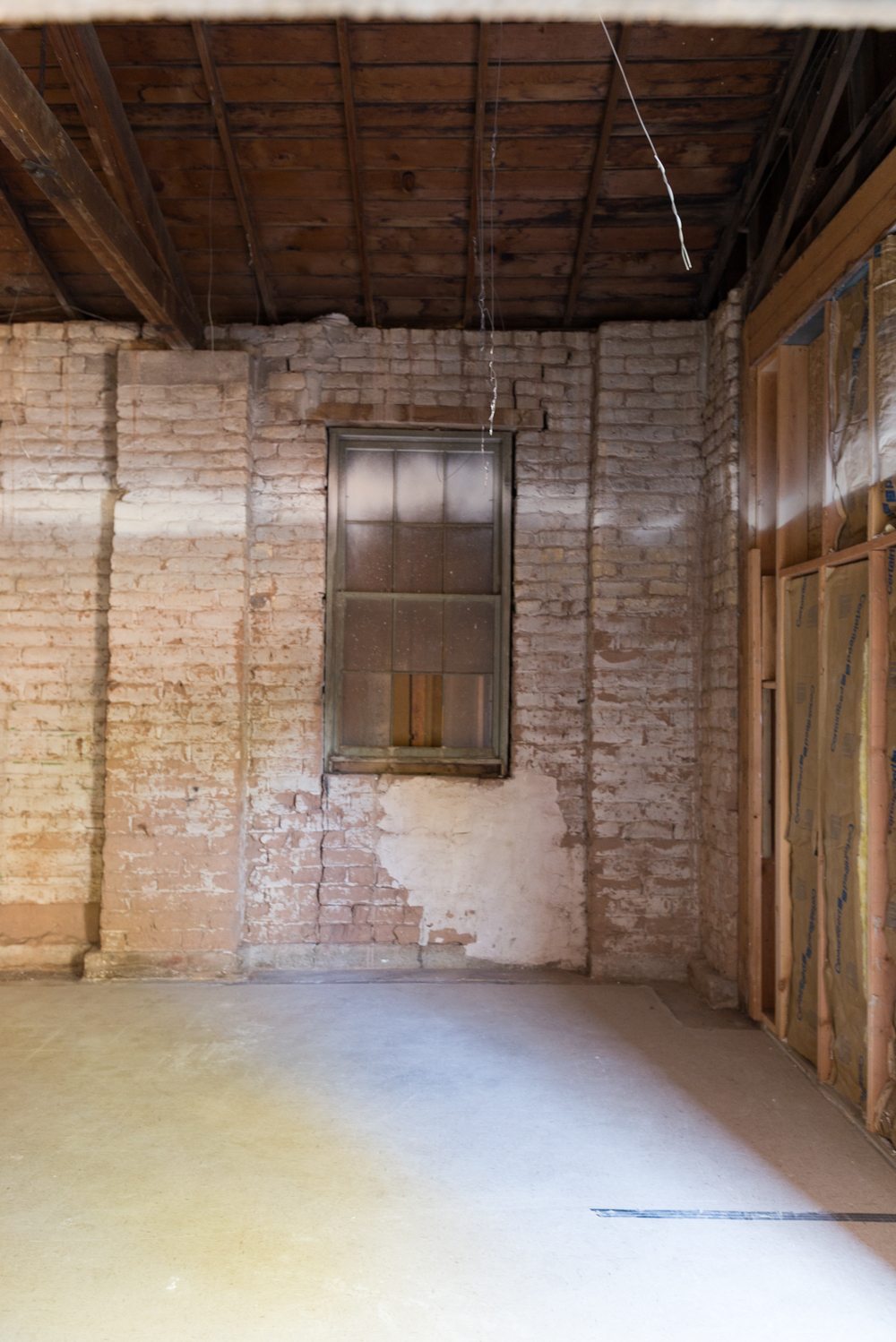
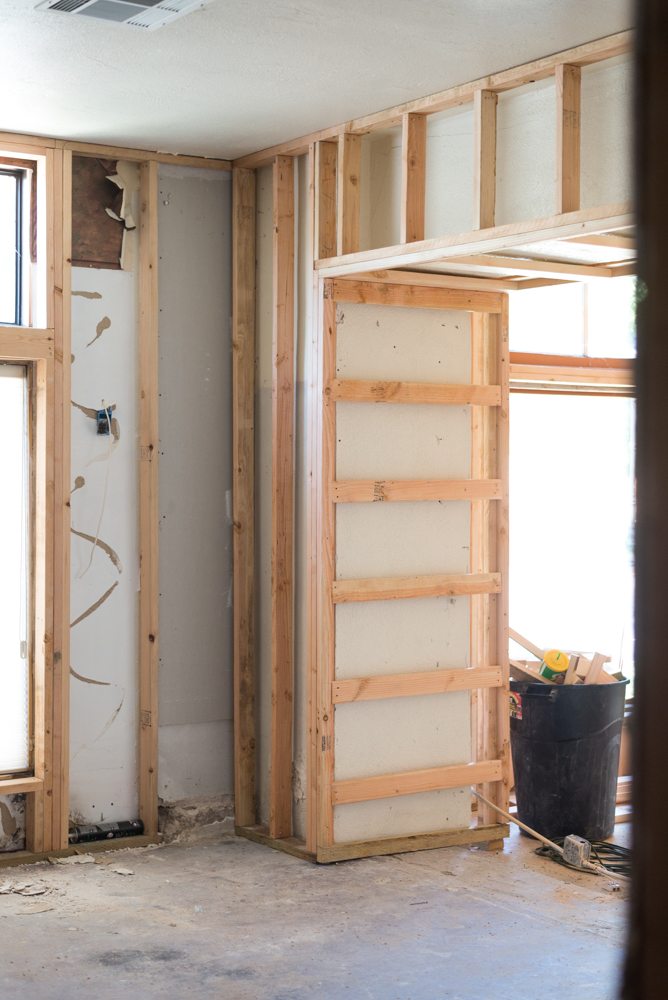
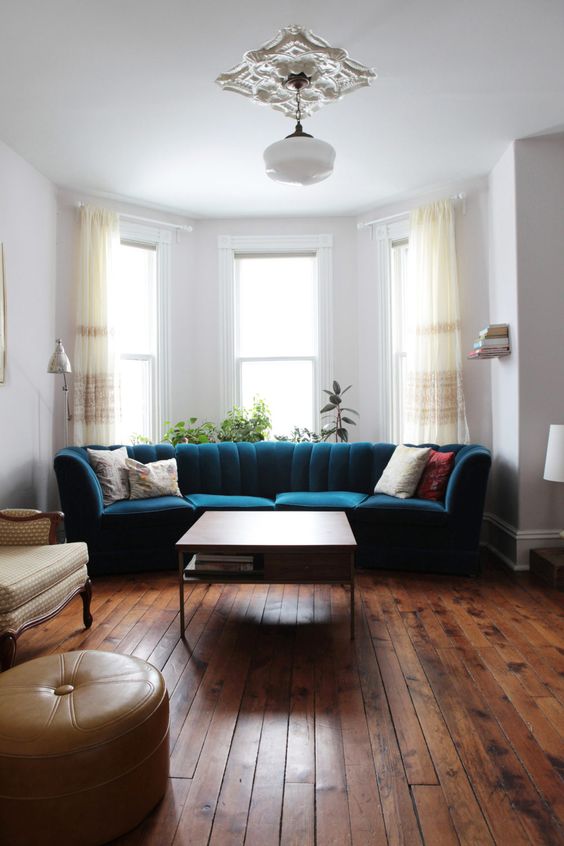
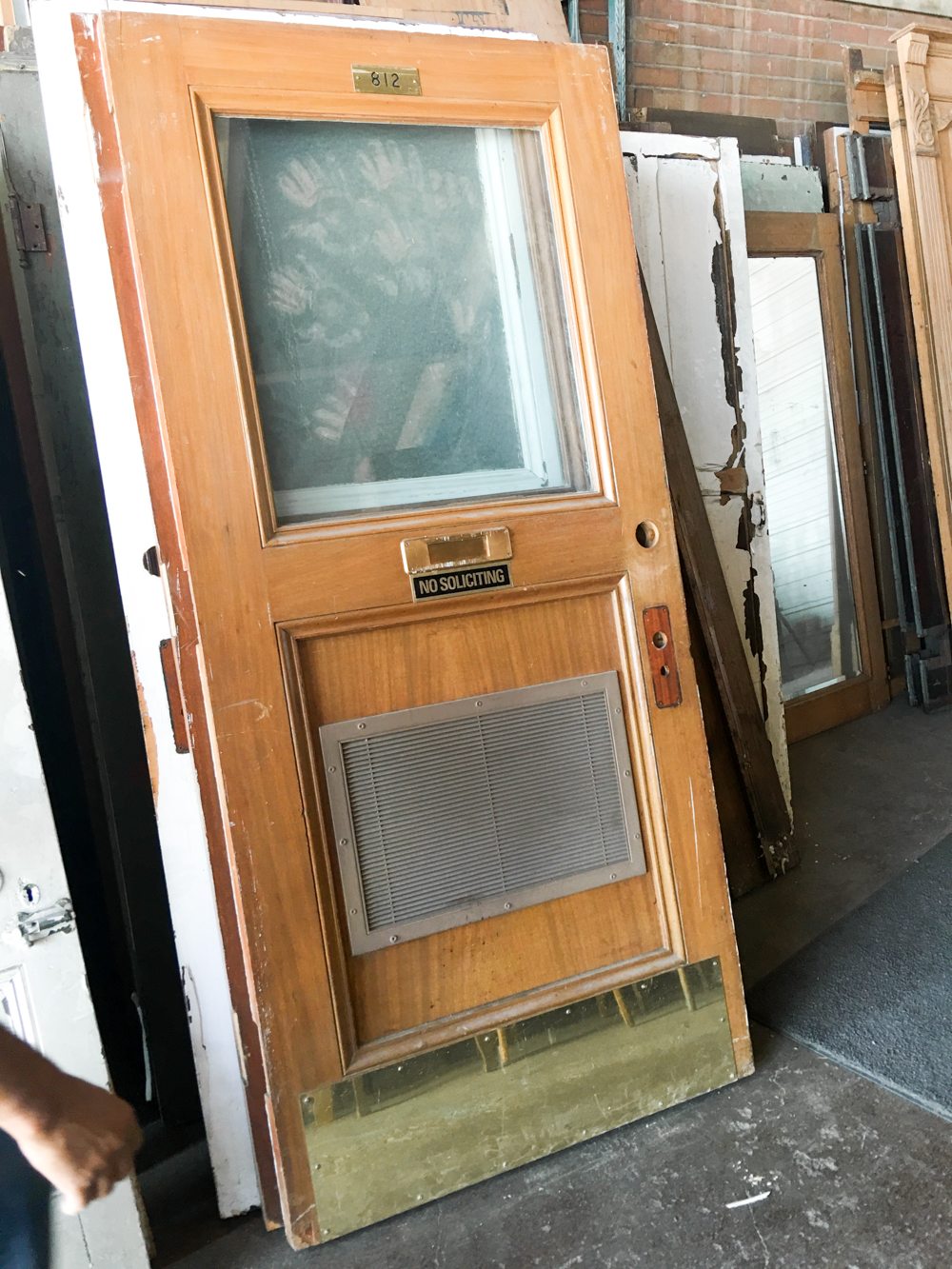
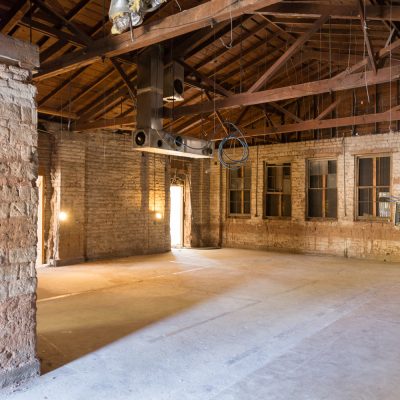
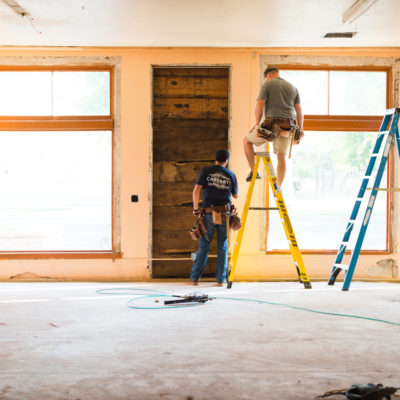
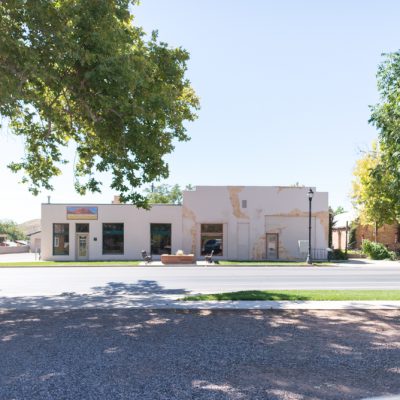
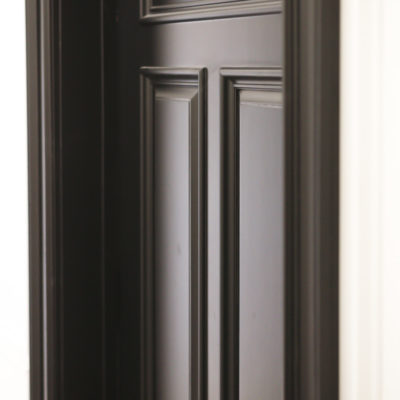
We have some original floors – some painted and some natural wood. Lots of gaps and cracks etc. We seriously don’t do anything special with them. I even use a steam cleaner (on the low setting) to mop them and they hold up fine. Some of the worst gaps are exactly where our almost two-year-old’s high chair sits so we do have to take out the shop vac every few days to get any sacrificed food out of the gaps.
My old apartment had these beautiful, original wooden floors in every room (very common here in Denmark). My apartment building was from 1918 and had so much personality-. And the wooden floors, despite being super soft (no heels allowed!) and a major hassle to clean (they were treated with lye? I am not sure that is the right word here but I don’t know how to explain it any other way) were amazing. And those floors just fit the apartment, with all it’s perfectly imperfect moldings, wonky doors and tiny bathroom.
Unfortunately the people I bought the flat from had had the bright idea to paint the floors in the kitchen and bedroom (in the early 00s). After a couple of years I finally saved up enough to get the floors in the kitchen professionally sanded down (and given a non-shiny coat of laquer, as the floor in a kitchen gets dirty with record speed and a non-treated floor there would be a silly, silly idea). It was the most beautiful thing and I loved it.
My flat now, though only from the 1960s, also has the original floors, which got sanded and laquered prior to moving in. And while the original style of this flat, including the floors, is completely different from my old one, these floors also just feel right for it in a way, say, carpet or painted floors (or even new wooden ones) would never do for me.
with really bad gaps, if you have any scrap pieces of wood (from tearing some up or whatever), you could grind those down and mix them w/ wood glue to fill the cracks in. it won’t look perfect, but it works. I think the blog “old town home” did this in a bathroom (either in their townhouse or their “cottage”) and it seemed to work great. they’re big on keeping the “old” in old houses :).
We have wood floors we fairly recently put in, and we purposely used circular-sawn planks so they’d look rustic from the start. Any gaps/cracks that appear, my husband fills with sawdust from sanding the floors, mixed with wood glue. It “breathes” like the rest of the floor and works amazingly! It’s a great old trick his woodworking uncle taught him.
This is what my father-in-law (who was a master cabinet builder and wood worker) used to do with wood floors. It always looked great!
When I lived in New Orleans, my house had been renovated but still had the original 180-year-old cypress wood floors. After Hurricane Katrina, my contractor suggested ripping them out and putting in laminate. I nearly fired him on the spot! I honestly didn’t do anything special to maintain them, regular vacuum or broom and occasionally a slightly damp mop. The gaps didn’t bother me but it was just me (no kids at the time) so there weren’t many crumbs or tracked-in dirt. I figured they had been around for almost two centuries, there wasn’t much I could do to harm them at this point!
here’s a link to the post–the part w/ the glue and wood sawdust is near the end. these guys are amazing, and they have tons of great tips, especially for those renovating older homes.
https://www.oldtownhome.com/2016/3/7/Bringing-a-Damaged-Heart-Pine-Floor-Back-from-the-Brink/
We have wood floors from 1904 – my only caution would be with top-nailed flooring. The nails creep out every time the humidity/ weather changes & snags our socks. Good luck with everything!
We have old timber floors which we waxed (instead of varnished) and they hold up beautifully. They get scratched and show wear and tear but we slap another coat of wax on every couple of years and they look like new again. The joy of waxed timber floors is that they feel like silky velvet underfoot (as opposed to the plastic feel of varnish).
I can send you pictures of the well-loved and well-worn floors in our 1898-1900 home! Please email me!
Bridget in Minnesota
We have our original 1905 floors – maple on the first and second floors, and fir in the attic – with two young kids, two cats and a dog. There are gaps and scratches, and I’m sure there’s dirt stuck in the gaps, but we don’t worry too much about it and still love them! I can’t imagine having new floors in our old house – it would look so weird. I sweep every couple of days and damp mop once every week or two, and they are perfect for our house.
We just moved into a 1911 farm house and have been ripping up carpet and subflooring to find the original pine floors. They’re not in amazing shape – pine is a soft wood. They are splintered and gapped and not perfect. Other than a few water damaged planks, we’re going to keep them all. I’ll get big rugs to conceal some of the worst spots. But I love them too much to replace them (I literally started screaming the first time I found them under pee-soaked carpet.)
I love that you’re staying true to the house and use as much of the original home as possible. That’s what adds the extra character and charm! I can’t wait to see it all finished 🙂
Best,
Kelly
Have you thought about buying old floors? I know that in the Bay Area of CA they are knocking down a lot of houses in order to build bigger ones. There are organizations that accept the donations of whole houses and take out all the fixtures, flooring, etc., and warehouses them for reuse. Maybe you could rent a trailer and bring home a houseful of wood floors.
In our 164-year-old Ohio house we had original floors in the dining room and upstairs. In the upstairs, they were fine but downstairs in the dining room, there was alot of bend and give. We had some gaps and while I loved the authenticity, gaps + Ohio winters were not the most ideal situation. Because the house sat on a fieldstone foundation, we had a lot of slope and drift in the floors. Nothing was plumb or square in the whole house.
While I loved the charm and the age and the authenticity, sometimes, it just got hard to live with at times.
I have original, over 100 year old floors! Vacuuming the gaps is really helpful (though the previous owner plugged in the gaps, in the winter the floors shrink and a lot of them have pulled out). My favorite thing to clean them with is tea! It has the right PH balance to clean the floors without taking off the finish and helps out with the patina and shine. I just throw two tea bags in a big pot of boiling water, then let it cool enough so I can throw a reusable cloth mop pad in and ring it out. It works great!
I love that your conscious of this. We had some old wood floors in our apartment, but have new vinyl flooring in our new (old) house. I miss the character of the old house and that the old wood floors hid dirt and crumbs a lot better.
Love what you are doing- such a cool project! My BIL is a hardwood flooring contractor, and he specializes in residential projects. He does a lot of refinishing of old wood floors including my parents’ 1930’s house. Older wood floors are great because they are thicker and can be refinished many more times compared to new floors, plus they have so much character! He introduced us to the Bona products, they have some great tips about cleaning and some products that clean but still protect your floor. https://us.bona.com/daily-clean.html